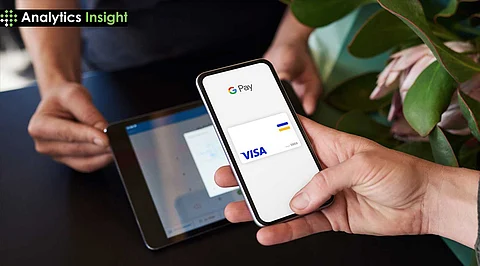Google Pay(4.5 / 5)
Google Pay is an online payment system that facilitates easy transactions. In India, it uses the Unified Payments Interface (UPI) to enable instant bank transfers. Globally, it integrates with Google Wallet for online purchases and tap-to-pay transactions. Users can send and receive money, shop and pay online, and securely make payments in-store. While personal use is primarily free, business services may incur fees. Google Pay places a strong emphasis on security, utilizing encryption and fraud protection to ensure safe transactions while providing a seamless user experience.
General Information
Launch Date: September 2017
App Downloads: Approx. 8.1 million (As of 2024)
Customers: Individual Users, Merchants, Developers, Financial Institutions
Platform Supports: Android and iOS
Download: Click Here
Main Features:
Google Pay is regulated by several key features that make the user experience and interaction richer:
1. Transfer money directly to anyone with their mobile number or UPI ID to their account.
2. Receive money directly into a bank account without giving account numbers or card details.
3. Pay directly for electricity, water, mobile, and other bills from the Google Pay app, hassle-free.
4. Make instant and secure payments for grocery bills, movie tickets, ride-hailing, or e-shopping for anything.
5. Receive special cashback rewards and discounts every time you shop online or offline.
Advantages of Google Pay:
1. It makes paying friends and family super fast, especially in India, by allowing instant money transfers directly from a bank account.
2. It enables secure and convenient transactions by tapping the device at compatible contactless terminals, eliminating the need to carry a physical wallet.
3. Shopping online becomes much easier as it eliminates the need to repeatedly enter the card details at checkout.
4. Google Wallet securely stores all the important cards, tickets, and passes in one place, making them easily accessible on a phone.
5. It provides strong security measures, such as encryption and fraud protection, which gives users peace of mind when making payments.
Disadvantages of Google Pay:
1. Payments cannot be made if the phone runs out of battery or lacks internet connectivity.
2. Despite strong security, there remains a small risk of data breaches, similar to other online payment systems.
3. Not all retailers support tap-to-pay, limiting Google Pay’s usability in certain locations.
4. Changes in how Google Pay functions, such as its integration with Google Wallet in some regions, may confuse.
5. Initial setup, including bank account linking, can be challenging for users unfamiliar with digital platforms.
Google Pay application Subscription Information:
Google Pay supports subscriptions for services such as music, video streaming, and in-app upgrades across multiple platforms.
1. Subscription management, including cancellations, must be done via the Google Play account, not directly through the Google Pay app.
2. The service is free for users; however, businesses may be subject to transaction fees.
3. Uninstalling an app does not automatically cancel its associated subscription.
Support Options for Google Pay:
Help Center: The Google Pay Help Center provides online resources for users. It offers FAQs, troubleshooting guides, and contact options for assistance with payment issues, account problems, and general inquiries. It's designed to solve problems
Customer Service: Google Pay offers customer help through its app and website. Find FAQs, troubleshoot issues, and contact support for help with payments, accounts, or problems. They aim to assist users quickly.
Conclusion:
Google Pay has evolved into a powerful and versatile digital payment platform that caters to regional needs. In India, it dominates the UPI network, offering seamless bank transfers. Globally, it integrates with Google Wallet, enabling contactless payments and digital storage. Despite facing intense competition and regulatory challenges, Google Pay remains focused on simplifying transactions for users. While it does encounter issues such as security risks and a reliance on technology, its growing popularity indicates a rising demand for efficient digital payment solutions. The platform's future success will depend on its ability to adapt to changing market needs and user expectations.
.png)

